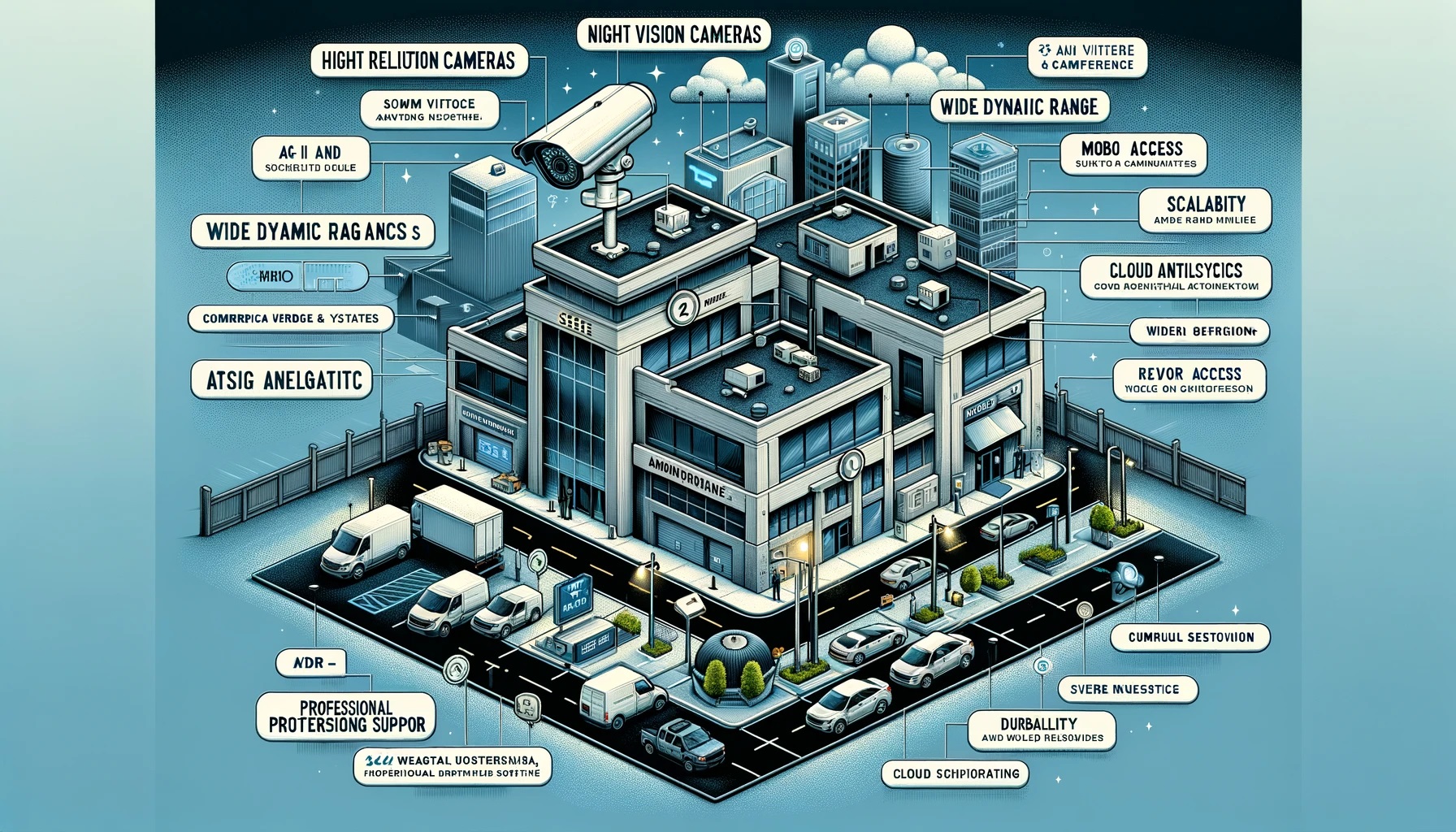1. High-Resolution Cameras
High-definition (HD) and ultra-high-definition (UHD) cameras provide clear and detailed images, making it easier to identify faces, license plates, and other important details. This clarity is essential for both real-time monitoring and reviewing footage.
2. Night Vision and Low-Light Performance
Infrared (IR) cameras or those with advanced low-light technology can capture clear images even in complete darkness, ensuring your property is protected 24/7.
3. Wide Dynamic Range (WDR)
WDR technology helps cameras handle varying lighting conditions within the same frame. Whether it's dealing with bright sunlight streaming through windows or shadowed areas in a warehouse, WDR ensures that the footage is balanced and clear, without overexposed or underexposed areas.
4. Remote Access and Mobile Monitoring
Look for systems that offer remote access through mobile apps or web portals, allowing you to view live feeds and recorded footage from anywhere. This feature provides peace of mind and convenience, especially for business owners who travel frequently.
5. Artificial Intelligence and Video Analytics
AI-powered systems can automatically detect and alert you to unusual activities, such as unauthorized access, loitering, or sudden movements. They can also recognize faces, count people, and even identify specific behaviors, enhancing overall security.
6. Scalability and Integration
Choose a system that is scalable and can integrate with other security solutions like access control, alarm systems, and fire detection. A scalable system allows you to add more cameras and features without replacing the entire system.
7. Cloud Storage and Backup
Cloud storage offers a reliable solution, providing secure, scalable, and easily accessible storage options. It also ensures that footage is not lost in case of damage to physical storage devices. Look for systems that offer cloud storage with encryption and regular backups.
8. Durability and Weather Resistance
Look for cameras that are rated for durability and weather resistance, typically indicated by an IP (Ingress Protection) rating. High-quality materials and robust construction are also important for indoor cameras in industrial environments.
9. User-Friendly Interface
The system should offer intuitive controls, easy navigation, and straightforward access to key features. Training staff to use a complex system can be time-consuming, so simplicity is key.
10. 24/7 Professional Monitoring and Support
Look for providers that offer 24/7 monitoring services, where trained professionals keep an eye on your property and respond to any alerts. Additionally, reliable customer support can help troubleshoot issues and ensure your system is always operational.
Choosing the right commercial surveillance system is a critical investment in the security and safety of your business. By focusing on these top 10 features, you can ensure that your surveillance system meets your needs and provides comprehensive protection.


